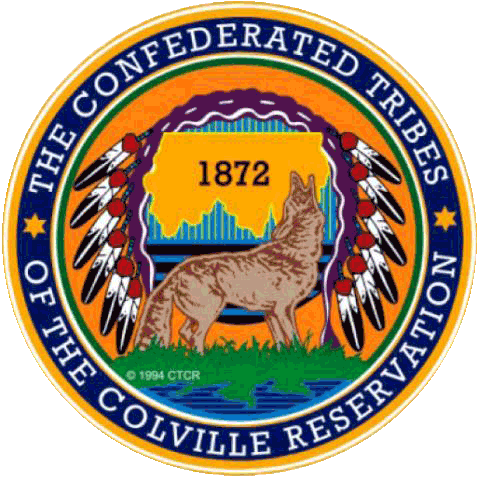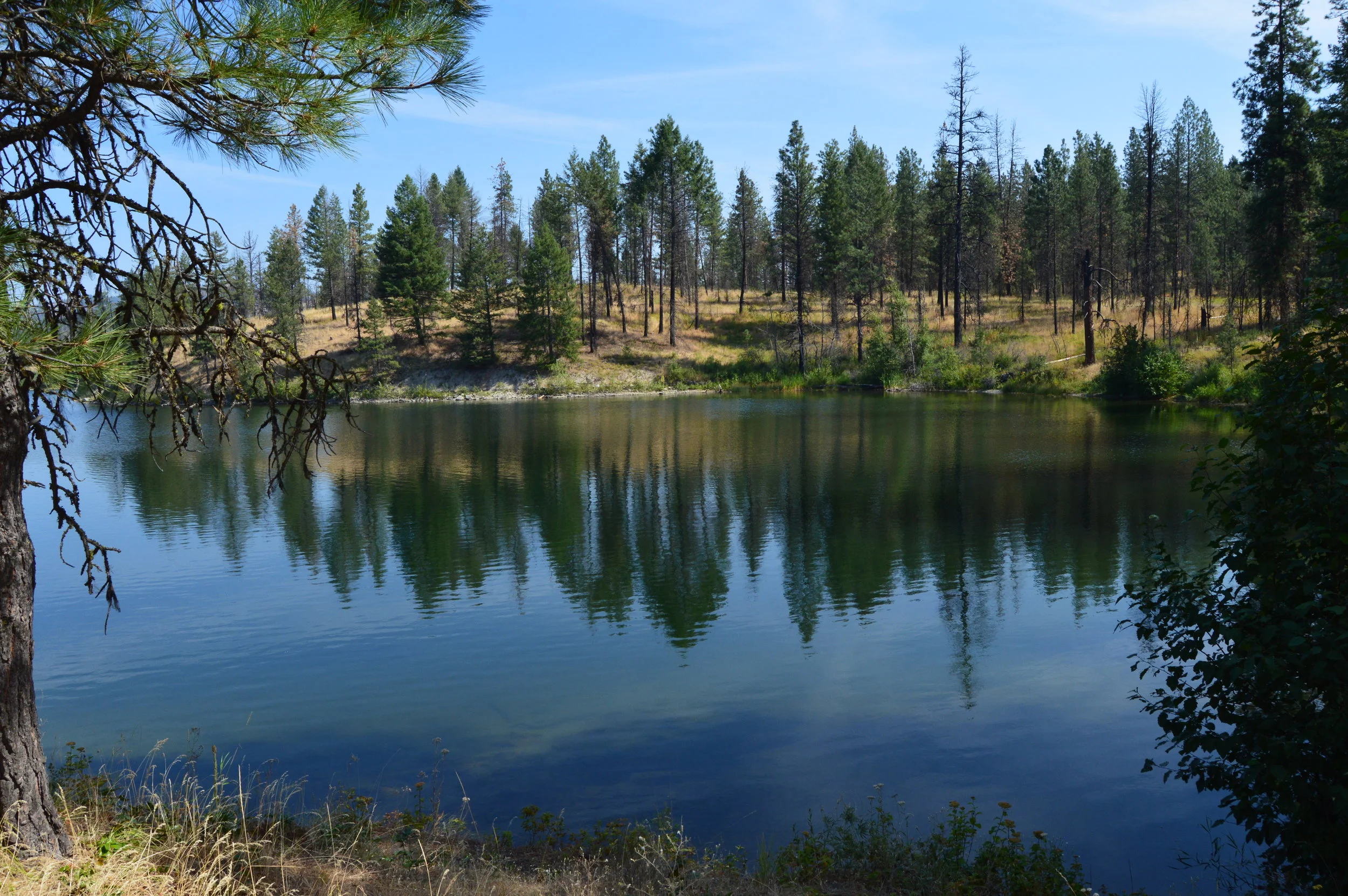The Confederated Tribes of the Colville Reservation is a Sovereign Nation.
The Confederated Tribes of the Colville Reservation is a federally recognized American Indian Tribe.
Today, over 9,365 descendants of 12 aboriginal tribes of Indians are enrolled in the Confederated Tribes of the Colville Reservation. The tribes, commonly known by English and French names, are: the Colville, the Nespelem, the Sanpoil, the Lake, the Palus, the Wenatchi (Wenatchee), the Chelan, the Entiat, the Methow, the southern Okanogan, the Moses Columbia and the Nez Perce of Chief Joseph’s Bands.
Prior to the influx of Canadians and Europeans in the mid-1850’s the ancestors of the 12 aboriginal tribes were nomadic, following the seasons of nature and their sources of food. Their aboriginal territories were grouped primarily around waterways such as the Columbia River, the Sanpoil River, the Okanogan River, the Snake River and the Wallowa River. Many tribal ancestors traveled throughout their aboriginal territories and other areas in the Northwest (including Canada), gathering with other native peoples for traditional activities such as food harvesting, feasting, trading, and celebrations that included sports and gambling. Their lives were tied to the cycles of nature both spiritually and traditionally.
The Colville Indian Reservation was established by Presidential Executive Order in 1872 and was originally twice as large as it is today.
The Colville Indian Reservation land base covers 1.4 million acres or 2,100 square acres located in North Central Washington, primarily in Okanogan and Ferry counties. The reservation consists of tribally owned lands held in federal trust status for the Confederated Tribes, land owned by individual Colville tribal members, most of which is held in federal trust status, and land owned by others, described as fee property and taxable by counties.
Colville Reservation lands are diverse with natural resources including standing timber, streams, rivers, lakes, minerals, varied terrain, native plants and wildlife.
The Colville Indian Reservation is occupied by over 5,000 residents, both Colville tribal members and their families and other non-Colville members, living either in small communities or in rural settings. Approximately fifty percent of the Confederated Colville Tribes' membership live on or adjacent to the reservation.
The Confederated Tribes of the Colville Indian Reservation are governed by the Colville Business Council. From its administrative headquarters located at the Bureau of Indian Affairs (BIA) Agency at Nespelem, the Colville Business Council oversees a diverse, multi-million dollar administration that employees from 800 to 1200 individuals in permanent, part- time and seasonal positions.
The Confederated Tribes operates on a yearly budget which is financed primarily from revenues generated from the sale of the Tribes timber products and from other sources including federal, state and private contributions.
The Confederated Tribes adheres to Colville Tribal Member Preference. Both Colville tribal members and non-Colville members are employed throughout its extensive governmental operation.
This governmental operation provides a variety of services for Colville tribal members living on the reservation and elsewhere, and for the management of reservation natural resources.
In addition, the Confederated Tribes have chartered its own corporation, the Colville Tribal Enterprise Corporation (CTEC), which oversees several enterprise divisions including a gaming division and three casinos. The Corporation employs several hundred permanent and part-time employees. The work force is composed primarily of Colville tribal members and non-tribal members from the communities where the enterprises are located.
Numerous chronic situations affect the daily lives of Colville tribal members such as high unemployment on the Colville Indian Reservation and lack of employment opportunities for much of the available labor force. Individuals and families suffer from the effects of extensive drug and alcohol abuse, domestic violence and crime.
In many instances, Colville Indian families are living below the national poverty standards year after year and depend on the Confederated Tribes and other welfare systems to survive.
Colville Indian Reservation communities lack adequate, affordable housing, home water systems and even electricity. Safe, usable roadways throughout the reservation are lacking as well as facilities such as modern health clinics and youth shelters.
Confederated Tribes strive to protect and enhance the quality of life for Colville tribal members and at the same time, govern as a sovereign nation.


